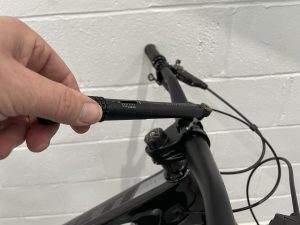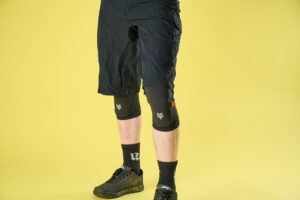Frame quality and suspension performance are both first rate
GT Sensor AL Sport review
We’ve tested the top of the range GT Force, this time it’s the entry-level GT Sensor Alloy. Opposite ends of the price spectrum, they have a lot in common.
>>> Which GT mountain bike is right for you?

GT Sensor Alloy Sport review
But before we get to that, let’s take a closer look at what sets them apart. The Force is a 150mm travel enduro bike that’s rolling on 27.5in wheels, the Sensor is a 130mm travel 29er.
Then there are some of the smaller details, like the carbon front end on the Force has a recess in the down tube to hide the cables; GT has dubbed this the groove tube. The alloy Sensor doesn’t get it. To be fair though, the higher end carbon Sensors do have the semi-hidden cable routing.
Geometry and size wise the bikes are pretty closely matched with one exception, BB height. In the low geometry setting the BB height on the Force is genuinely low at 332mm. The BB height on the 130mm Sensor however is it’s actually high at 341mm, and that’s in the low setting. Interestingly, the difference in BB heights is roughly equivalent to the difference in wheel sizes.

Slick LTS suspension design also benefits from the best-tuned shock on test
Suspension
Both bikes are based around the revised GT LTS suspension design, and just like the Force the 130mm travel Sensor has a nice sensitive initial touch and doesn’t ramp up too sharply, so you get to use all of the travel to absorb bumps, not just on big jumps and drops.
The larger volume air can on the X-Fusion O2 Pro RL shock has a much better feel to it than the standard O2 RL on the Marin Rift Zone, and we like the fact that the lock out is more of a pedal platform, offering additional support for climbing without rendering the rear suspension redundant.
Balancing the amount of travel front and rear is the RockShox Recon RL. It smooth, plush and easy to set up. In fact, it’s the exact same suspension fork that comes on the Norco Fluid FS. It doesn’t have a quick release axle though, so you’ll need an Allen key to remove the wheel. The same goes for the rear wheel on the GT.

Short stem wasn’t the cause of our cramped position
Components
Only the tyres let the build kit on the GT down. Yes, the 2.25in WTB Ranger Comp tyres roll fast and would probably suffice, at least on the rear, if you stuck to armoured trail centres and towpaths, but this is a 130mm travel 29er with a sub 65° head angle so it’s designed be ridden really hard. In order to do that though GT should have fitted WTB Trail Boss or Vigilante tyres instead.

It was the tall BB, even in the low setting, that contributed to the cramped feeling
Performance
First ride out on the Sensor and something didn’t feel quite right. We knew that the size L had a generous 470mm reach measurement, but the bike felt much smaller than the number suggested. The short 40mm stem combined with the extra back-sweep of the handlebar made it feel like your hands are in your lap when stood up, while the offset seat tube and inline seat post push the rider forward when seated. To compensate, we rolled the handlebars forward and slammed the WTB saddle back on the seat post, opening up the cockpit to deliver a more commanding riding position.
We also increased the rebound damping on the shock and fork to stop the bike pitching forward and backwards on more challenging terrain. These small changes made a big difference to the ride but we still felt too on top of the bike to take full advantage of the best suspension in test. Yes, you’ve probably guessed it; everything we were doing to the set up was a workaround for the overly tall BB height. And while there are advantages to having extra pedal clearance, the Sensor has two geometry settings so in theory everyone should be accommodated, but not when the bike is already too high in the low position. Which is a real same as GT got everything else right.

Verdict
There’s no denying that the entry-level GT Sensor Alloy Sport is a polished product - the frame quality and LTS suspension performance are both first rate. And while we can overlook GT’s choice of tyres, it’s impossible to ignore the BB height. Even with the flip-chip set to the low setting, the BB is 15mm too high. And while this doesn’t sound like much, it really impacts everything from sizing, handling, suspension set-up and ultimately the performance of the bike. And that’s simply because it elevates the single heaviest component on the bike… you, the rider.
















